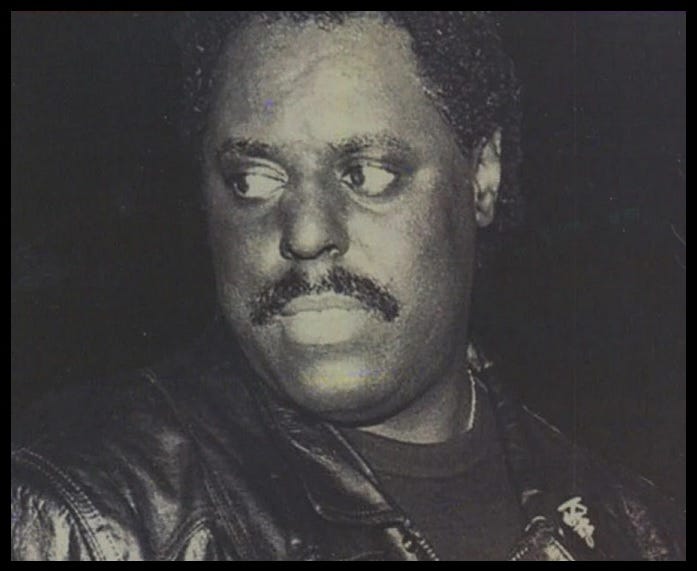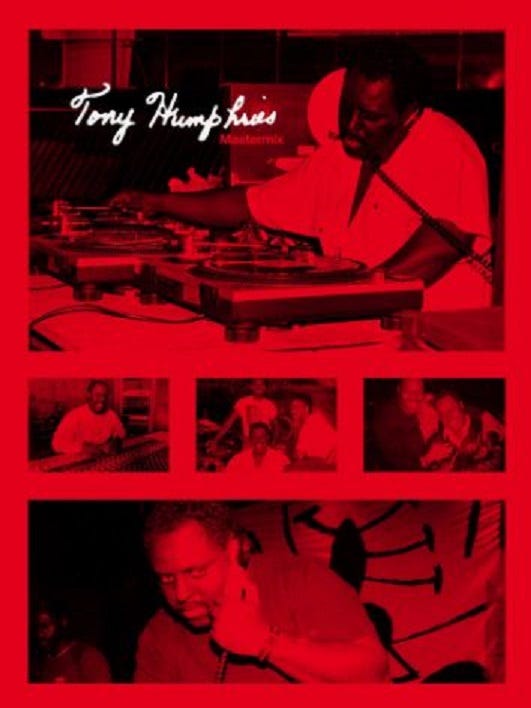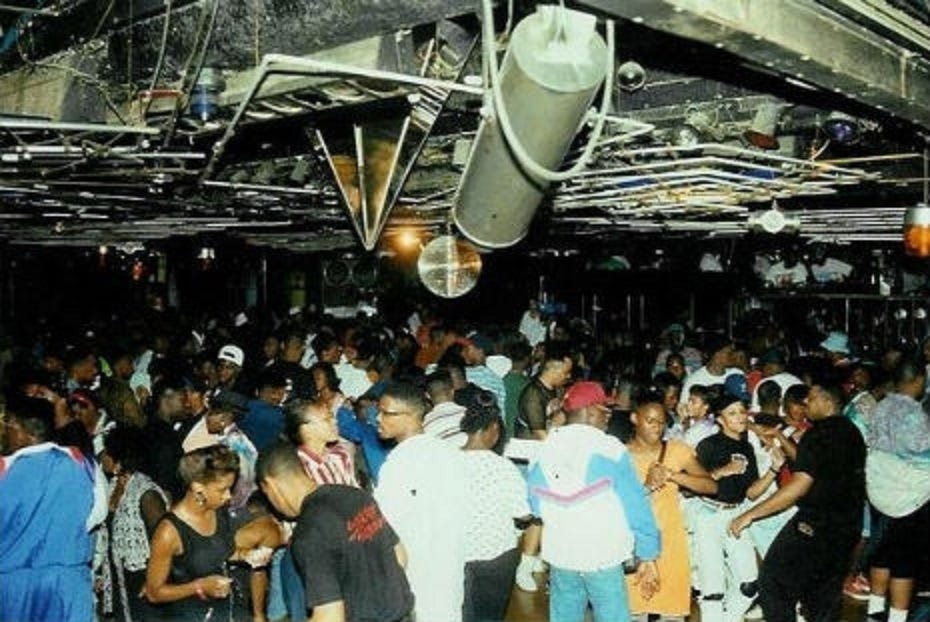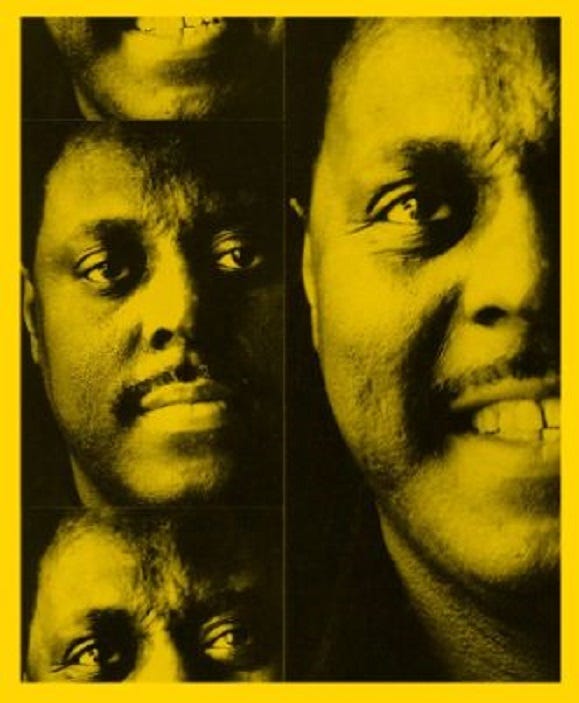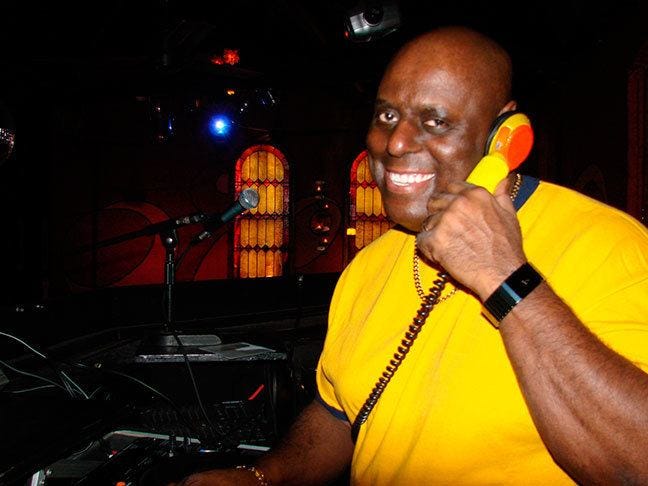Tony Humphries (born November 3, 1957) – The Music Got Me (1983)
One of the godfathers of garage house and former resident DJ at the legendary Club Zanzibar, Humphries mixed this hugely influential proto-house record.
View most updated version of this post on Substack.
Behind the turntables at Club Zanzibar in Newark, NJ and on air at New York City’s KISS-FM in the 1980s, the legendary DJ Tony Humphries helped house music become a global phenomenon.
Humphries was born into a musical family in Brooklyn. His father was a noted salsa performer who played alongside greats like Tito Puente. Tony began collecting records when he was ten years old, and started DJ’ing in college.
In 1981, he had a chance encounter with New York City’s 98.7 KISS-FM DJ Shep Pettibone and went on the air for the first time. The following year in 1982, he was asked by Pettibone to fill in for the one of the station’s popular weekend afterhours mix shows. He became one of the show’s main DJ’s, which aired every Friday and Saturday nights, and often appeared on the mix shows from 1982-94.
Also in 1982, Humphries began a residency at Club Zanzibar in Newark, New Jersey. It was the most influential club besides the Paradise Garage in the development of house music in the New York region during the eighties, mostly due to Humphries’ presence behind the turntables. The two clubs kept dancefloor culture alive throughout the decade, with Zanzibar lasting longer than the Garage (which was located at 84 King Street in NYC’s Greenwich Village and shut down on October 1, 1987 when its lease expired).
In an oral history of Zanzibar published in 2015, Humphries recalled how he began his residency there:
“I knew Larry Patterson, and one day he said, “You gotta check out this club in Jersey!” I was like, ‘Jersey! You gotta be kidding.’ But Shep Pettibone, Jose Guzman – who was one of the on-air personalities at Kiss FM – and myself decided to take a ride out to Newark and check it out. I walked in and said, ‘Holy shit – this feels exactly like the Garage! They got something like this out here?’ It was half the size of the Garage, of course – but I was shocked. I started hanging out there, listening to Larry Patterson on Wednesdays and Fridays, and Tee Scott on Saturdays. After I had been hanging out at Zanzibar for a while, I decided I wanted a chance to test my ability to play alongside these folks. It wasn’t even about the money. Larry and Tee kind of let me in slowly, letting me play for a while when they went off to do their thing. Finally I said, ‘Look, guys – if you don’t give me Wednesdays, I’m not coming back any more.’ And that’s how I got into Zanzibar.”
DJ Danny Krivit of Body & Soul, the long-running NYC dance party, remembers that Humphries mixed and championed a hugely influential proto-house record in 1983, Visual’s “The Music Got Me,” co-written and produced by Boyd Jarvis:
“Tony had a sound that was centered around underground Jersey house, and – before that – it was stuff that wasn’t quite house yet, like “The Music Got Me” by Visual. It was when all the Jersey producers were starting to come up. I would hear him play classics sometimes, but they were the kind of classics that would fit into the house groove that he liked. The main thing about Tony is that he was very much in a groove; there weren’t many dramatic pauses or changes. And the crowd loved the groove.”
The music that Humphries and others played at Zanzibar came to be known as the Jersey sound, a soulful, vocal-oriented, gospel-influenced style of house. It was called garage house in the UK, named for the Paradise Garage.
In 1988, Humphries co-wrote, mixed and edited the stellar garage/dub house anthem “Happy Heart” by Charles Blackman. It was produced by Amir Bayyan, aka Kevin Bell, the younger brother of Robert “Kool” Bell and Ronald Bell of Kool & The Gang and one-time leader of the Kay-Gees.
Interviewed about Zanzibar and the Jersey sound in the late 80s, producer Winston Jones observed:
“Club Zanzibar is a classic. You won't see no other club like it in the country. That's mainly due to Tony Humphries, because he gives the audience a certain feel. When you go inside Zanzibar, you get trapped in some kind of trance. He creates his own little world, and he invites you to it. And you get lost in it. That's what dance music, what music's supposed to do in the first place.”
A music video was made at the club in 1989 for K-YZE’s “Stomp (Move, Jump, Jack Your Body),” which aside from amateur videos and footage from TV news stories remains one of the only professionally filmed records of Zanzibar’s dancefloor and amazing lighting.
In the early nineties, Humphries made his first trip to the UK and was blown away by the size of the house music scene there. He eventually became a resident at London’s Ministry of Sound for a brief period. By the time he returned to New Jersey, Club Zanzibar had changed its named to Brick City, and switched to a mostly hip-hop format.
According to Gerald T. Roney, one of the club’s original DJ’s, “Once Zanzibar went hip hop, that was it. There was fighting, stabbings, all kinds of stuff. I was happy that was out of there by then.” The club closed before long, with Humphries spinning on its final night and ending his set at 5:30 am with the 1976 Philly soul classic “Where Will You Go When The Party’s Over” by Archie Bell & the Drells.
After Zanzibar closed, Humphries devoted more time to DJ’ing internationally and producing records. In 1996, he co-wrote and produced the stellar house jam “Feel The Light,” credited to The Family Presents A Tony Humphries Project, released on Underground Music Movement Records (UMM).
Reflecting on Zanzibar’s legacy in 2015, Humphries made it clear what a special place and time it had been:
“There are plenty of great underground parties around now, but it would be great to go back to what we had at Zanzibar. I do appreciate everything that’s happened since then, and I have become more of what I guess you would call a worldly DJ... but I have felt a bit like a fish out of water since then.”
Further info:
“Club Zanzibar & the New Jersey Sound (early 90s) Parts 1 & 2,” via Tony Humphries' YouTube channel.
“Club Zanzibar and Newark's dance revolution,” by Marc Campbell, DangerousMinds.net, May 20, 2011.
“Nightclubbing: Zanzibar, An Oral History,” Red Bull Music Academy Daily, by Bruce Tantum, February 5, 2015.
“The Newark Sound,” by Bruce Tantum & Julie Winokur, Newest Americans, January 22, 2016.
#soul #funk #disco #house #garage #JerseySound #ClubZanzibar #TonyHumphries




